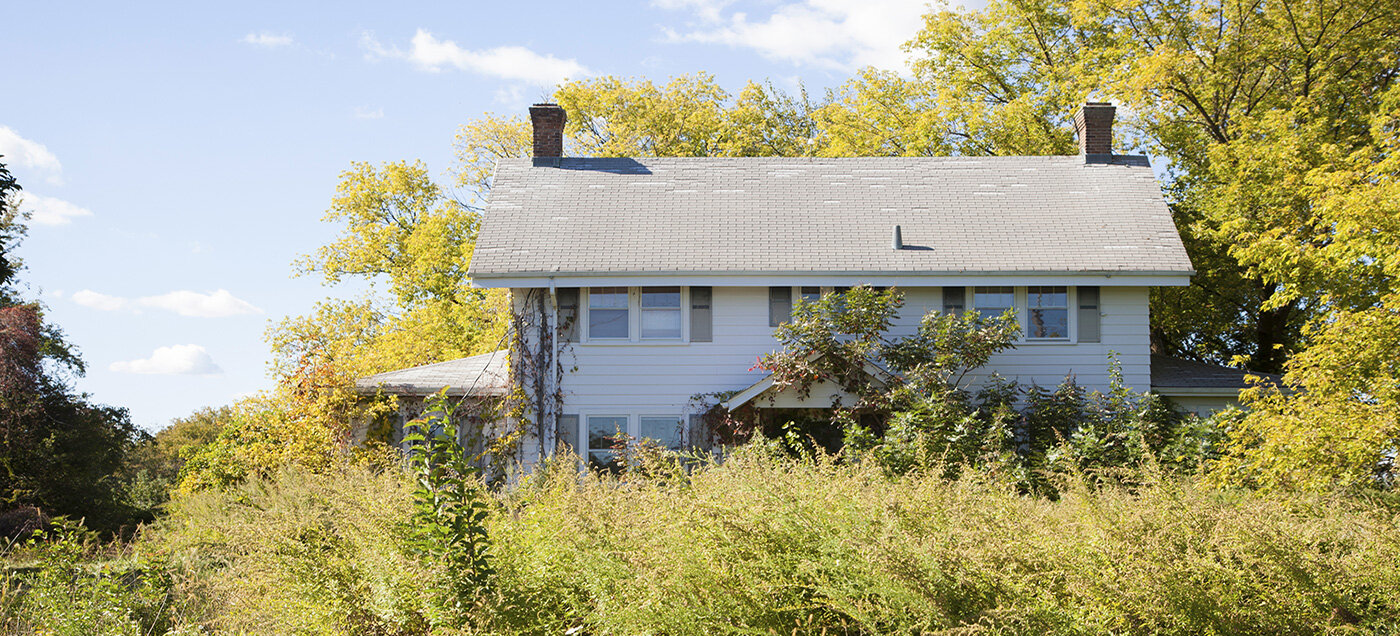Residential Real Estate News

Vacant Zombie Homes Dip in Q3 as Foreclosure Moratorium Ends in U.S.
Residential News » Detroit Edition | By Michael Gerrity | September 9, 2021 9:03 AM ET
According to ATTOM Data's third-quarter 2021 Vacant Property and Zombie Foreclosure Report, 1,332,706 residential properties in the United States sit vacant. That represents 1.4 percent, or one in 74 homes, across the nation.
The report reveals that 215,495 properties are in the process of foreclosure in the third quarter of this year, down 3.7 percent from the second quarter of 2021 and down 0.2 percent from the third quarter of 2020. Among those pre-foreclosure properties, 7,538 sit vacant in the third quarter of 2021, down quarterly by 6.7 percent and annually by 5.3 percent.
The portion of pre-foreclosure properties that have been abandoned into zombie status dropped slightly, from 3.6 percent in the second quarter of 2021 to 3.5 percent in the third quarter of 2021.
Among the nation's total stock of 98.4 million residential properties, the portion represented by zombie foreclosures remains miniscule. Just one of every 13,060 homes in the third quarter sat empty in the foreclosure process, down from one in 12,256 in the second quarter of 2021 and from one in 12,486 in the third quarter of last year.
The third-quarter zombie foreclosure numbers reflect one of many measures showing how strong the U.S. housing market remains, but also one likely to face a downturn to varying degrees across the country over the coming year.
The decade-long, national home-price boom has continued roaring ahead in 2021, with double-digit annual gains throughout most of the country and almost no blight stemming from vacant properties in foreclosure. That has happened despite economic damage to major sectors of the U.S. economy connected to the Coronavirus pandemic that hit early last year. But the number of foreclosures - and with it, the number sitting vacant - is almost certain to increase because the federal government recently lifted a 15-month moratorium that had prevented lenders from taking back properties from homeowners who fell far behind on mortgage payments during the pandemic. An estimated 1.5 million to 2 million homeowners were in some kind of forbearance when the moratorium ended in July 2021.
"Vacant properties in foreclosure, and the resulting potential for neighborhood decay, continue to be a non-issue overall in most of the country. But that could easily change over the coming months as lenders are now free to take back properties from delinquent homeowners," said Todd Teta, chief product officer with ATTOM. "How much, how fast and where that happens will depend on how different banks approach the situation. Some may decide to vigorously pursue foreclosures to recoup losses from the pandemic while others give homeowners more time to get back on their feet. But it's hard to imagine that zombie foreclosures will continue to be so few and far between across the national landscape."
Zombie foreclosures down in 31 states
A total of 7,538 residential properties facing possible foreclosure have been vacated by their owners nationwide in the third quarter of 2021, down from 8,078 in the second quarter of 2021 and from 7,961 in the third quarter of 2020. The number decreased, quarter over quarter as well as year over year, in 31 states.
Among states with at least 50 zombie foreclosures during the third quarter of 2021, the biggest decreases from the second quarter to the third quarter of this year are in Maryland (zombie foreclosures down 39 percent, from 151 to 92), Massachusetts (down 26 percent, from 89 to 66), New Mexico (down 24 percent, from 85 to 65), Connecticut (down 12 percent from 75 to 66), Florida (down 11 percent, from 1,021 to 912) and Maine (down 11 percent, from 66 to 59).
Largest zombie property counts remain in Northeast and Midwest
New York continues to have the highest number of zombie properties in the third quarter of 2021 (2,053), followed by Ohio (939), Florida (912), Illinois (805) and Pennsylvania (366).

"There are two reasons we might see an increase in zombie properties as we approach Halloween," said Rick Sharga, Executive Vice President of RealtyTrac, an ATTOM Company. "First, the CFPB has authorized lenders to pursue foreclosure proceedings on vacant and abandoned homes now that the government's moratorium is over. Second, they've also given the go-ahead to re-start the foreclosure process on loans that were already 120 days delinquent prior to the moratorium, and it's not unlikely that over the past 15 months many of those financially-distressed homeowners have vacated their properties."
Overall vacancy rates continue dropping most in midwestern and southern states
Vacancy rates for all residential properties in the U.S. declined to 1.35 percent in the third quarter of 2021 (one in 74 properties), from 1.42 percent in the second quarter of 2021 (one in 70) and 1.58 percent in the third quarter of last year (one in 63). States with the biggest quarterly decreases in overall vacancy rates are Oregon (down from 1.8 percent of all homes in the second quarter of 2021 to 1.3 percent in the third quarter), Maryland (down from 1.7 percent to 1.1 percent), Wisconsin (down from 1.4 percent to 1 percent), Mississippi (down from 2.2 percent to 1.9 percent) and Minnesota (down from 1.5 percent to 1.2 percent).
Other high-level findings from the third-quarter 2021 data:
- Among 162 metropolitan statistical areas with at least 100,000 residential properties and at least 100 properties facing possible foreclosure, the highest zombie rates in the third quarter of 2021 are in Portland, OR (13.7 percent of properties in the foreclosure process are vacant); Fort Wayne, IN (12.9 percent); Detroit, MI (11.9 percent); Cleveland, OH (11.8 percent); and Honolulu, HI (11.3 percent).
- Aside from Portland, Cleveland and Detroit, the highest zombie-foreclosure rates in major metro areas with at least 500,000 residential properties and at least 100 properties facing foreclosure in the third quarter of 2021 are in Atlanta, GA (10.1 percent of properties in the foreclosure process are vacant) and Indianapolis, IN (8.3 percent).
- Among the 27.5 million investor-owned homes throughout the U.S. in the third quarter of 2021, about 933,500, or 3.4 percent, are vacant. The highest levels of vacant investor-owned homes are in Indiana (6.9 percent), Tennessee (6.1 percent), Kansas (5.9 percent), Oklahoma (5.4 percent) and Ohio (5.2 percent).
- Among the roughly 4,800 bank-owned homes in the U.S. during the third quarter of 2021, 17.8 percent are vacant. In states with at least 50 bank-owned homes, the largest percentages sitting vacant are in Kentucky (40.9 percent), Ohio (37.2 percent), Missouri (35.3 percent), Illinois (25.7 percent) and Michigan (24.2 percent).
- The highest zombie-foreclosure rates among counties with at least 500 properties in the foreclosure process during the third quarter of 2021 are in Cuyahoga County (Cleveland), OH (13.3 percent of pre-foreclosure homes are empty); Broome County (Binghamton), NY (11.9 percent); Pinellas County (Clearwater), FL (11.4 percent); Onondaga County (Syracuse), NY (10.6 percent) and St. Clair County, IL (outside St. Louis, MO) (9 percent).
- The lowest zombie rates among counties with at least 500 properties in foreclosure in the third quarter of 2021 are in Alameda County (Oakland), CA (0.4 percent of pre-foreclosure homes are empty); Mercer County (Trenton), NJ (0.4 percent); Atlantic County (Atlantic City), NJ (0.5 percent); Bergen County, NJ (outside New York, NY), NY (0.6 percent) and Mecklenburg County (Charlotte), NC (0.7 percent).
- Among counties with at least 50,000 residential properties, those with the largest portion of total homes in zombie foreclosure status in the third quarter of 2021 are Broome County (Binghamton), NY (one of every 659 properties); Cuyahoga County (Cleveland), OH (one in 879); Suffolk County (eastern Long Island), NY (one in 1,217) Peoria County, IL (one in 1,236) and Bronx County, NY (one in 1,418).
Sign Up Free | The WPJ Weekly Newsletter
Relevant real estate news.
Actionable market intelligence.
Right to your inbox every week.
Real Estate Listings Showcase
Related News Stories
Residential Real Estate Headlines
- More Americans Opting for Renting Over Homeownership in 2024
- BLOCKTITLE Global Property Tokenization Platform Announced
- Small Investors Quietly Reshaping the U.S. Housing Market in Late 2024
- Greater Miami Overall Residential Sales Dip 9 Percent in November
- U.S. Home Sales Enjoy Largest Annual Increase in 3 Years Post Presidential Election
- U.S. Housing Industry Reacts to the Federal Reserve's Late 2024 Rate Cut
- U.S. Home Builders Express Optimism for 2025
- Older Americans More Likely to Buy Disaster-Prone Homes
- NAR's 10 Top U.S. Housing Markets for 2025 Revealed
- U.S. Mortgage Delinquencies Continue to Rise in September
- U.S. Mortgage Rates Tick Down in Early December
- Post Trump Election, U.S. Homebuyer Sentiment Hits 3-Year High in November
- Global Listings Aims to Become the Future 'Amazon of Real Estate' Shopping Platform
- Greater Las Vegas Home Sales Jump 15 Percent in November
- Ultra Luxury Home Sales Globally Experience Slowdown in Q3
- World Property Exchange Announces Development Plan
- Hong Kong Housing Market to Reach Equilibrium in Late 2025
- Construction Job Openings in U.S. Down 40 Percent Annually in October
- U.S. Mortgage Applications Increase in Late October
- World Property Markets, World Property Media to Commence Industry Joint-Venture Funding Rounds in 2025
- New Home Sales Hit 2 Year Low in America
- U.S. Pending Home Sales Increase for Third Consecutive Month in October
- Pandemic-led Residential Rent Boom is Now Fizzling in the U.S.
- Emerging Global Real Estate Streamer WPC TV Expands Video Programming Lineup
- 1 in 5 Renters in America Entire Paycheck Used to Pay Monthly Rent in 2024
- U.S. Home Sales Jump 3.4 Percent in October
- Home Buyers Negotiation Power Grows Amid Cooling U.S. Market
- Canadian Home Sales Surge in October, Reaching a Two-Year High
- Greater Orlando Area Home Sales Continue to Slide in October
- U.S. Mortgage Credit Availability Increased in October
- U.S. Mortgage Rates Remain Stubbornly High Post Election, Rate Cuts
- Construction Input Prices Continue to Rise in October
- BETTER MLS: A New Agent and Broker Owned National Listings Platform Announced
- Home Prices Rise in 87 Percent of U.S. Metros in Q3
- Caribbean Islands Enjoying a New Era of Luxury Property Developments
- The World's First 'Global Listings Service' Announced
- Agent Commission Rates Continue to Slip Post NAR Settlement
- Market Share of First Time Home Buyers Hit Historic Low in U.S.
- Greater Palm Beach Area Residential Sales Drop 20 Percent Annually in September
- Mortgage Applications in U.S. Dip in Late October





